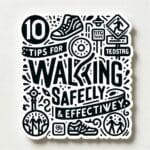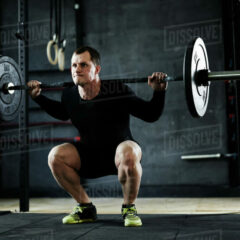https://weightliftingforpower.com/10-Tips-For-Walking-Safely-And-Effectively/
Walking is more than just a way to get from point A to point B; it’s a tips cornerstone of a healthy lifestyle. Recognized for its cardio benefits and low impact on joints, it’s an exercise that’s accessible to just about everyone. Yet, as with any physical activity, a fusion of safety and efficiency is vital. This article isn’t about walking more; it’s about walking smarter.


Whether you’re walking for fitness, leisure, or your daily commute, key considerations must be made to ensure not just safety but also effectiveness. It is not about a one-size-fits-all rulebook. Instead, I want to offer practical advice that you can tailor to your life, surroundings, and fitness level.
It’s crucial to recognize that every step counts. Applying these tips can help you avoid unnecessary risk and make each walk an investment in your long-term health. Let’s step forward together on this path of better walking, keeping safety and personal wellbeing in mind, and enjoying this simple yet profound activity.
Pre-Walk Preparation: Laying the Groundwork for Safety


When I consider walking as part of my fitness regimen, I start with preparation. It’s not just about lacing up any old pair of sneakers and hitting the pavement. Being adequately prepared can have a substantial impact on both your safety and comfort.
I can’t stress enough the importance of choosing the proper footwear. Ill-fitting shoes can cause blisters, shin splints, and long-term joint problems, so it is important to choose the right shoes. So, I look for shoes with good arch support, cushioning, and a grip that matches the terrain I plan to tackle.
It’s also vital to know where I’m going. Surveying my route beforehand lets me anticipate busy intersections, uneven sidewalks, or areas with poor lighting. It helps me stay safe and avoid any potential hazards along the way.
Remember hydration and nutrition. A well-hydrated body performs better, and a light, nutritious snack can provide the energy needed for a vigorous walk. Dynamic stretches prime my muscles and prepare my body for the movements, reducing the risk of injury.
With my shoes tied, the route set, and my body nourished and warmed up, I’m preparing to leave. When walking, it’s essential to take steps, proactively prioritize safety, and prepare for the journey ahead. Next, I’ll share how to put these preparations into practice with effective walking techniques.
Walking Techniques: Maximizing Benefits While Minimizing Risks
Mastering the art of walking isn’t just about putting one foot in front of the other; it’s about how you do it. Pacing is your secret weapon here. Finding your ideal walking speed is critical. It’s a balance between pushing yourself just enough to elevate your heart rate and maintain endurance without overstressing your body.
It’s not just speed that matters, but also how you carry yourself. Proper posture can make a tremendous difference. Standing tall, keeping your gaze forward, and your shoulders relaxed allows efficient breathing and prevents back pain.
Every path presents its own set of challenges and rewards. Whether trekking on a trail or walking on a city street, modifying your stride according to the terrain helps maintain balance and avoid mishaps.
Safety isn’t just about your physical wellbeing; it’s also about being conscious of your environment. It means staying aware of the traffic alongside roads, keeping an eye out for uneven pavements, or being mindful of natural obstacles on a trail.
You are moving on; cooling down after your walk is as critical as the walk itself. It’s tempting to skip this part, especially after a long walk when you’re eager to rest. However, this next section will reveal why the cooldown is a golden opportunity to enhance your walking routine further.
Post-Walk Practices and Considerations
I cannot emphasize enough how vital your post-walk routine is. It is where you help your body recover and gear up for the next outing.
Cooling down should be an unskippable ritual. It’s simple: finish your walk with a few slower, relaxed paces, then do some stretches. Target your legs, calves, and back. These stretches are vital. They improve flexibility and can drastically reduce your risk of injury.
More and more walkers are turning to technology to stay on track. It’s wise to use apps and gadgets to monitor your activity. But remember, it’s about informing your journey, not dictating it. These tools should empower you, not lead to overreliance or self-criticism.
Another critical point is self-awareness. After each walk, take a moment to reflect. How do you feel? Are there any aches or pains that weren’t there before? Responding promptly to your body’s signals is non-negotiable. Catching potential issues can prevent long-term setbacks.
Finally, balance is your friend. Walking every day is excellent, but too much without rest can lead to burnout or injury. Adequate rest is part of the program, not an interruption. Listen to your body, and it will likely thank you with more enjoyable, effective walks in the following days.
